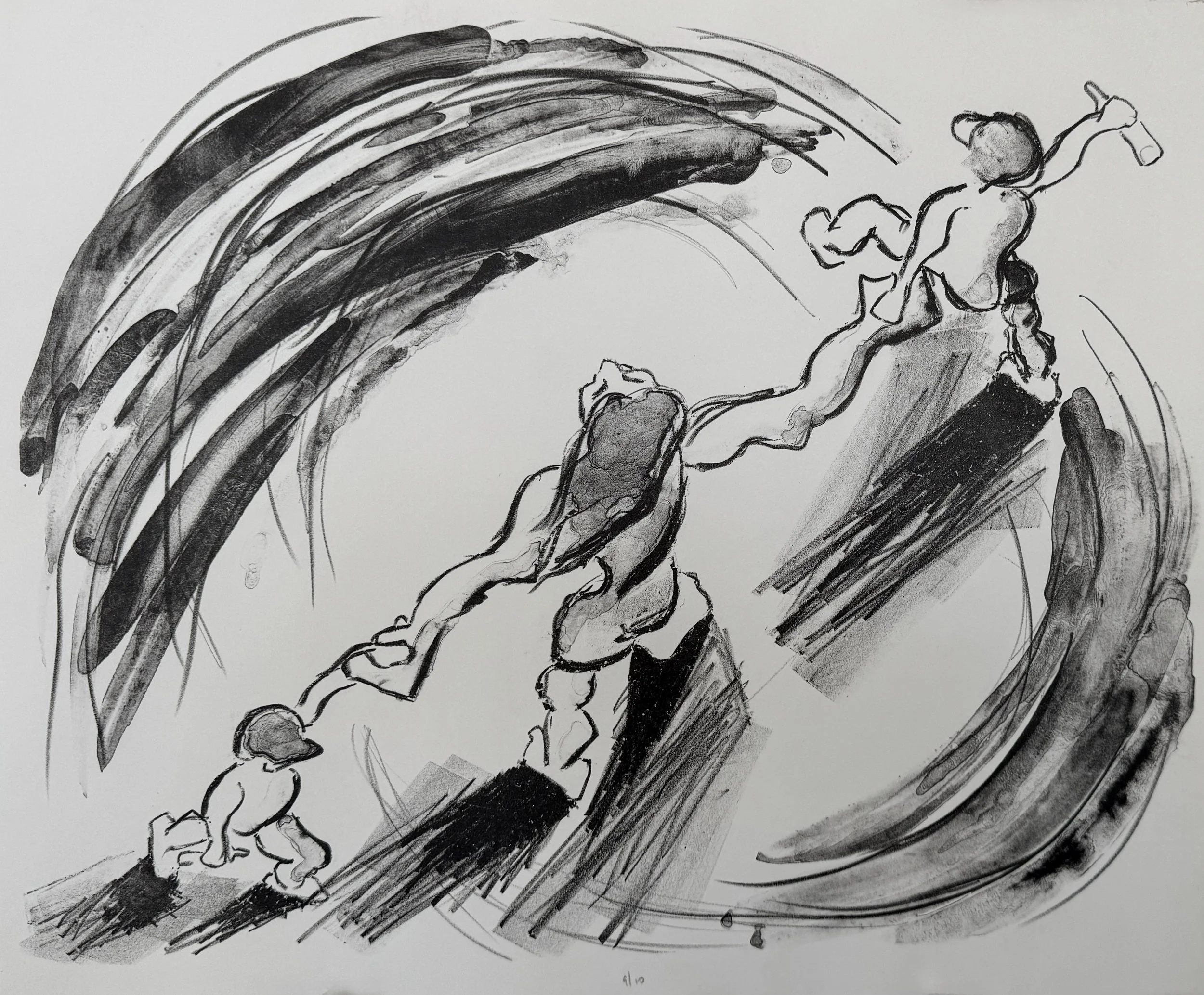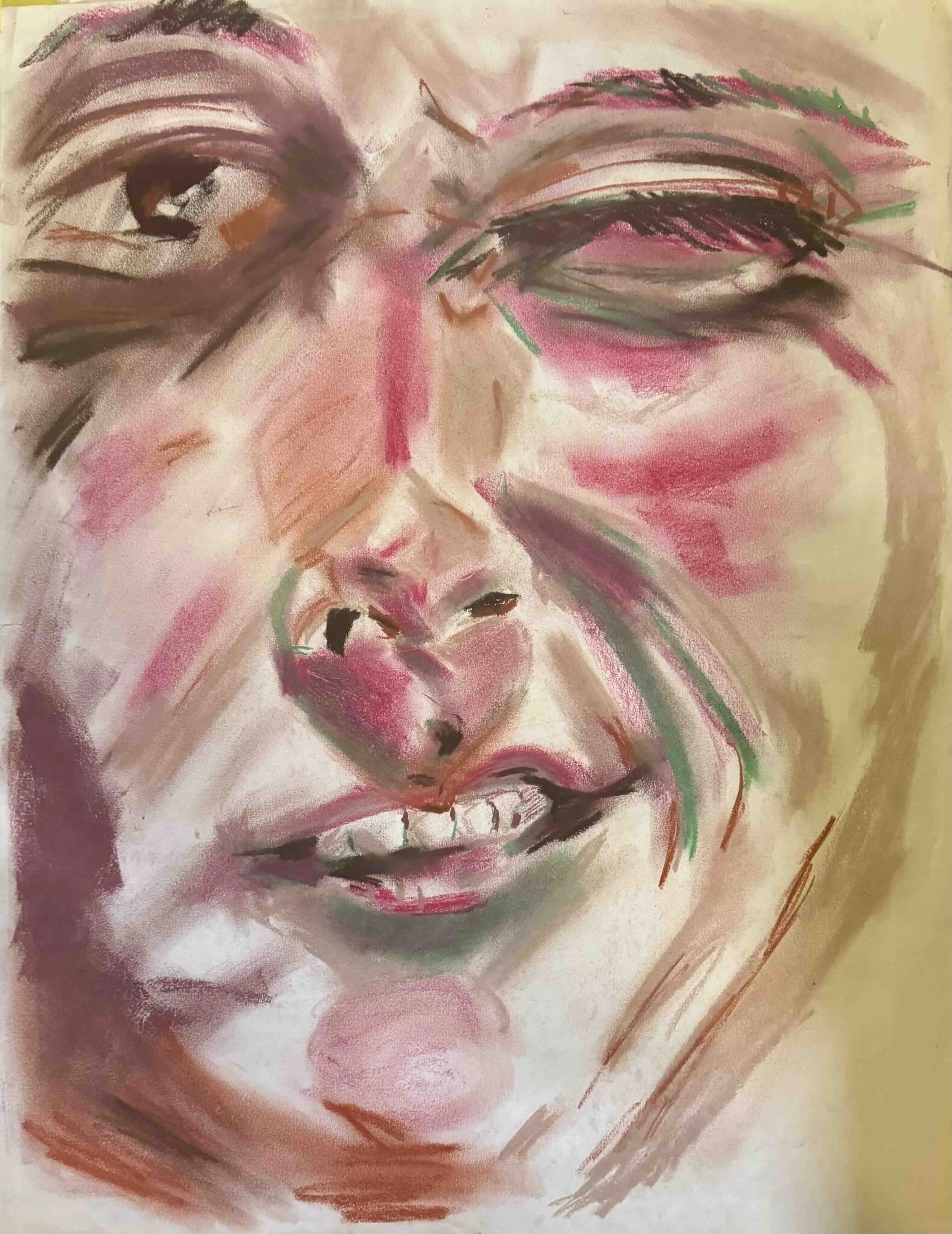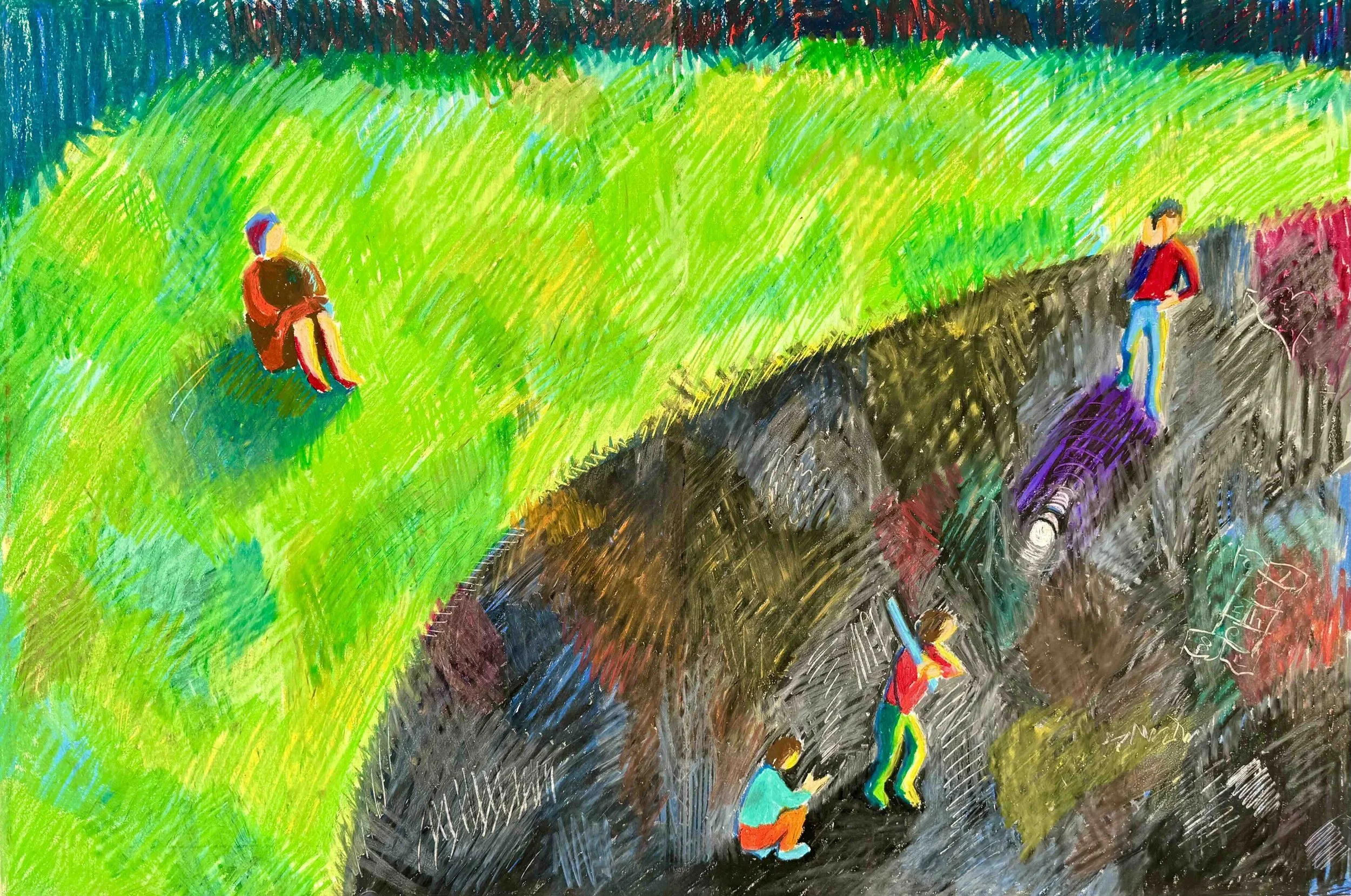Making Art - Oct 2025
A professional career in art didn’t call to me at first, but it called me at last. Turning towards my childhood passion and lifelong vocation as an artist only made sense once I finished all the preoccupying demands of midlife — an income-generating profession to support myself, having children to extend myself into the future, buying and selling a home on a piece of land, a foothold in the earth. And now, yes, now at this late stage, when my contemporaries were busily hiring gym trainers to trim down, or rushing to the Physical Therapy center to resolve physical injuries, or fiddling with their savings in the stock market, I turned my head to look behind, and there it was — my love of art.
I was very young when I first discovered the satisfaction of creating a likeness. At the beginning it was drawing the house I occupied with my mom, my small fingers working so hard to recreate the lines of the wood siding, not yet understanding about perspective, and the trick of the eye if one made the lines meet in the distance at a particular point, then fanning them out towards the viewers as they approached the foreground of the image. I drew my house and the little cubby hole table with benches in the kitchen and the dolls arranged in a line on the couch. Later I drew women as models dressed in the latest style, popping them onto the white pages of my sketchbook as if they were cutouts from fashion magazines.
I had a certain feeling when drawing, a kind of detachment from the distractions of life. I watched my pencil recreate a gesture or expression on a face, in a hand or arm. The feeling of being completely in the experience and not one single part of me watching, aware of my actions, my internal state. Later I would know that as a state of ‘flow’ — but by then I was a therapist reading some article in Psych Today magazine and nodding in recognition. Surgeons get into flow. Pilots. And naturally, artists.
Which came first — loving art or craving that feeling? Did I begin drawing the moment I sensed troubles at home? There certainly were many reasons for me to bow out, step back, scoot away. And art was an easy fix. Or was I already drawing and only later learned that I had completely blotted out a whole episode of the family drama, and then I realized that I could leave the world of reality and enter a more beautiful one simply by watching a leaf curl over itself in the tree hanging over our front porch?
Art was always there to soothe and excite me. To parent me. And I dipped into it whenever there was an opportunity. In high school I took an afterschool painting classes with a friend at an older artist’s apartment — her small rooms were lined with piles of paintings, and she had a strong foreign accent, which I found reassuring. Hungarian? Romanian? She taught us oil painting — so satisfying. On little canvas stretchers. I loved it. Art followed me. I used it at school to create dioramas and robots and paintings of whatever project needed attention and then took hobby art courses in my twenties in ceramics and painting. Once I had kids it was easy, congruent. Laying out paints and paper, or plastic Shrinky-dinks, or playdough and clay, a rainy afternoon at home was a deep dive down into the sea of visual and tactile exploration.
Where did my drive go during those years of career, children, houses, dogs, gardens, travel, politics, meetings, hiking, and swimming? Did I squeeze in moments here and there to express something, something essential, or even simply to find myself?
In my twenties, no kids yet, I lived in a farmhouse with friends. The house is plunked down in a many acred orchard of old apple and peach trees. There’s a horse in the tiny barn and fifty chickens clucking all day in the coop nearby. Off the kitchen there’s a tiny room with a washer and dryer at one end. I use that space to paint. I have an easel set up in the section of the room with the most daylight, and today I’m working on a large, stretched canvas with an image of two tan work boots sitting at the foot of a wooden folding chair, a pair of dungaree overalls draped over it. The still life is set up next to the painting. I am staring at it, deciding if the piece is finished. I am happy with the strong burnt sienna color of the boots contrasting with the blue of the jeans. There’s a kind of tingling feeling when complementary colors sing to each other like this.
I’m taking an extension class at the University in oil painting with a young guy named Jack. He likes my work so far but is asking me to keep painting beyond the moment I think the painting is done. I know that I often am most excited when I first ‘get’ the concept down on the canvas. I can see on the surface what I have so far only imagined. Bingo! I’m done.
And yet, I understand that there’s much to be learned from pressing on, taking each step, and expanding it. The shoes move from a sketch, loose with much intimated, to a strongly articulated, realistic depiction of two very lived and worked-in shoes. Now I just have to figure out when to call it quits because the painting is actually finished, rather than from the fear of messing up the initial blocking out that I love.
Those paintings — the jeans and the boots, then a ranch house on a street, a woman lying spread out on a couch, maybe six, seven large canvases, will later be burned in a fire at a house in which they are stored, but by then I have learned to take photos on slides, so they are saved in the memory.
And during the second marriage and the making of family, I stay loyal to the art. I take courses at the local university while pregnant, making oils of my distended body, then printmaking with all its chemicals that later are pegged as toxic, and the watercolor class with the prof who asked me, us all, to make fifty of anything during the semester, and I do fifty self-portraits, many of which end up on my friends’ walls for years afterwards.
I didn’t know about toxins in paint — the cadmiums, the alizarin crimsons. So much to learn. But I knew to keep at it. Two weeks after my first son is born, our little family moves to Cambridge, MA so I can go to the School of the Museum of Fine Arts. I fall in love — with my first child and my first serious art education. I breastfeed from 4:30 to 7AM and pump my milk, drop my little boy in his car seat at a local babysitter, then race across the Harvard Bridge to the school on Huntington. For the few hours I’m there, painting, drawing, getting critiqued, I am just myself, internal, watching the brush, the charcoal, the pencil on the canvas, the paper. It pours out… still lifes, nudes, landscapes.
“All I want to know is, am I an artist?” I put this question on the table at my first end of semester critique.
“Are you an artist? What a silly question. Yes, you are an artist, but the more important question is, will you continue to make work when not in school. That’s what determines being a true artist. Making work!” my most hardnosed prof spits back at me. And I realize that she has a point. Will making art matter enough that I will extricate myself from all the responsibilities of raising a child, and then another, and working to support myself, and being a good enough wife, and a woman with a political conscience? Will I want it enough? Only time will tell, as the saying goes… (To be continued!)



